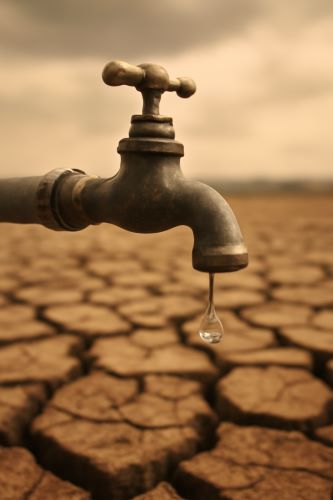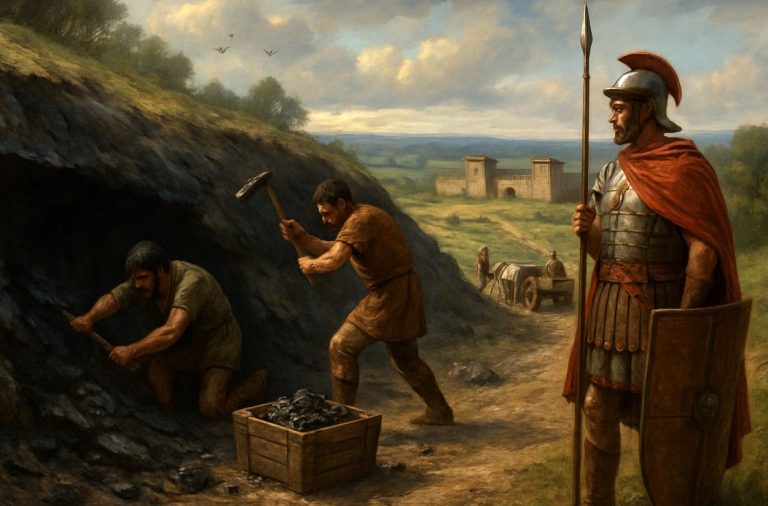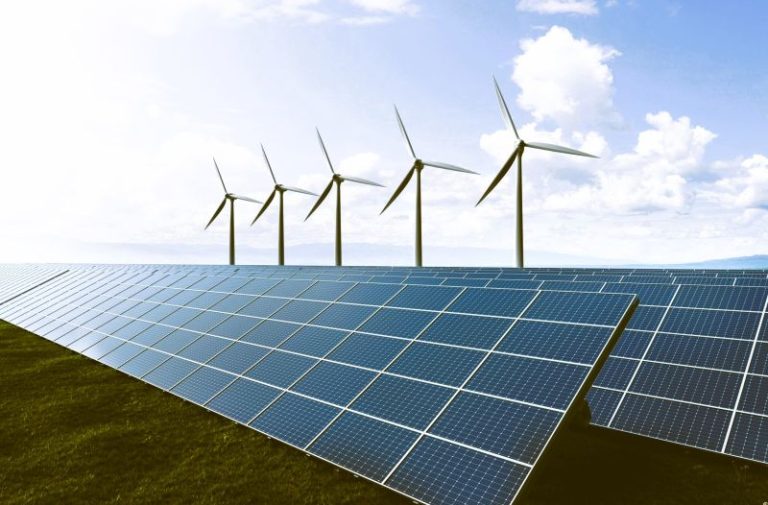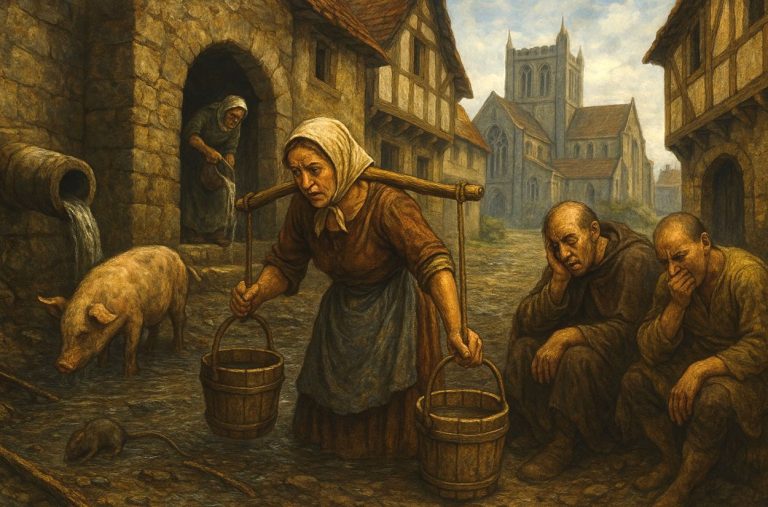

Across the world, the slow drip of crisis is becoming a roar.

By Matthew A. McIntosh
Public Historian
Brewminate
Water has long been regarded as the world’s most essential resource—more vital than oil, more fundamental than gold. Yet, in the 21st century, humanity stands on the precipice of a crisis that threatens this very foundation of life. As climate change accelerates, the planet’s freshwater reserves—already finite and unevenly distributed—are drying up, becoming contaminated, or disappearing altogether. The impacts are not distant projections. They are here now: rivers are vanishing, aquifers are collapsing, and once-reliable water sources are no longer safe or sustainable. In a warming world, drinking water is becoming not only scarcer but more insecure, setting the stage for widespread humanitarian and geopolitical upheaval.
At the heart of this crisis is the inescapable reality that climate change alters the water cycle itself. As global temperatures rise, evaporation intensifies. Rainfall patterns become more erratic. Droughts grow longer and more severe, while floods become more frequent and destructive. Snowpacks melt earlier and faster, and glaciers—the slow-release reservoirs for billions of people—are shrinking at alarming rates. The hydrological rhythms that once dictated seasonal water availability are collapsing into chaos.
Few places embody this transformation more starkly than the American West. The Colorado River, a lifeline for over 40 million people across seven U.S. states and parts of Mexico, is drying up under the weight of overuse and persistent drought exacerbated by climate change. Lake Mead and Lake Powell, the two largest reservoirs fed by the Colorado, have hit record lows in recent years, threatening hydropower production and forcing unprecedented water cuts to cities and farms alike. What was once a vast and reliable waterway is now a battleground for survival—among states, sectors, and species.
Globally, the picture is even more dire. In the Himalayas, the so-called “Third Pole,” glaciers are melting at twice the rate observed just two decades ago. These ice reserves feed the Indus, Ganges, Brahmaputra, Yangtze, and Mekong rivers, which sustain over 1.5 billion people. As the glaciers shrink, water supplies become less predictable—surging in some months, vanishing in others. The danger is twofold: catastrophic flooding from glacial lake outbursts in the short term, followed by long-term water scarcity as the glaciers disappear.
Meanwhile, sub-Saharan Africa faces its own reckoning. Countries like Ethiopia, Kenya, and Somalia are enduring their longest and most severe droughts in decades. Millions of people in the Horn of Africa now rely on emergency water deliveries as traditional wells and boreholes dry up. Crops have failed, livestock have died, and famine looms in the shadow of a water crisis that no longer respects political borders or seasonal expectations.
In coastal regions, climate change delivers yet another blow through saltwater intrusion. As sea levels rise, saltwater pushes further into freshwater aquifers, contaminating wells that once provided safe drinking water. This phenomenon has hit small island nations in the Pacific particularly hard. In places like Tuvalu and Kiribati, residents now rely on rainwater catchment systems and imported bottled water just to meet daily needs. In Bangladesh, millions face arsenic and salinity-laced water in coastal communities that were once agriculturally rich and hydrologically secure.
Even where water remains abundant, it is not necessarily safe. Warming temperatures promote the growth of harmful algal blooms in lakes and reservoirs, rendering once-safe water sources toxic to both humans and wildlife. In the United States, cities along Lake Erie and other major freshwater bodies have periodically been forced to shut down drinking water supplies due to algal contamination. These blooms are fed not only by heat but by nutrient runoff from agriculture, another system thrown off balance by climate instability.
As water stress rises, so too does the risk of conflict. The World Economic Forum has consistently ranked water crises among the top five global threats in terms of impact and likelihood. In regions where water scarcity collides with poverty, migration, and political instability, the danger is combustible. In the Sahel, disputes over dwindling water and pastureland have fueled violence between herders and farmers. In Central Asia, tension simmers between upstream and downstream nations over control of glacial runoff. And as nations look increasingly inward to secure their water futures, transboundary cooperation is faltering.
But this is not a story without hope. Around the world, communities are innovating, adapting, and fighting to protect their water futures. Israel, long a parched land, has emerged as a global leader in water efficiency, recycling nearly 90 percent of its wastewater and investing heavily in desalination. Cape Town, South Africa, narrowly averted “Day Zero”—the point at which the city would have run out of water—through aggressive public education, water restrictions, and infrastructure upgrades. In India, rainwater harvesting, once a traditional practice, is being revived as a cornerstone of water resilience in drought-prone regions.
Technology offers promise, but it is no substitute for systemic change. Desalination, for example, is expensive, energy-intensive, and inaccessible to many poorer nations. Recycling and purification systems must be scaled equitably. Above all, global warming itself must be confronted head-on. Every additional degree of warming brings exponential impacts on the water cycle. The Intergovernmental Panel on Climate Change (IPCC) warns that without dramatic reductions in greenhouse gas emissions, large swaths of the planet may become functionally uninhabitable due to chronic water shortages by the end of the century.
In the end, water scarcity is not just a climate issue. It is a justice issue, a health issue, a security issue. It is a question of who gets to live with dignity and who must live in desperation. As water becomes more precious, so too must our commitment to treating it not as a commodity to be exploited, but as a sacred trust to be preserved. The tap is still running—for now. But across the world, the slow drip of crisis is becoming a roar. Unless bold, coordinated, and compassionate action is taken, the well may run dry for billions. And when that happens, the wars of the future may not be over territory, ideology, or oil—but over the last glass of clean water.
Originally published by Brewminate, 07.04.2025, under the terms of a Creative Commons Attribution-NonCommercial-NoDerivatives 4.0 International license.


